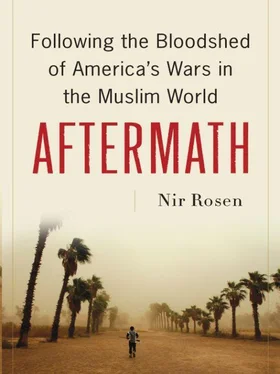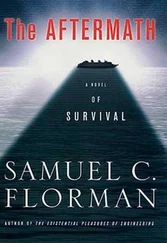The next morning Ironhorse went out on patrol with the ANCOP and found five IEDs placed on the road I had just taken. That day a twenty-vehicle Marine convoy from a base in the desert to the west tried to go to Aynak to resupply the Americans. Twenty kilometers away the Taliban attacked the convoy so fiercely that it turned back. Eight British soldiers had been killed in Helmand the previous night. On the afternoon of my return to Lashkar Gah, two mortars landed just outside the base.
The Afghan army refused to come to Helmand, the Americans said. Tens of thousands of Afghan soldiers had been trained at the cost of billions, and yet the Afghan army was a no-show in a major operation contingent on an “Afghan face” that wasn’t there. What was the point of an army that didn’t deploy?
EIGHT YEARS INTO THE WAR, the Americans and ISAF were making their big push. With more international troops and more combat would come more civilian casualties. The American focus on the south had allowed provinces like Logar and Wardak in Kabul’s backyard to fall into Taliban hands. With only sixty thousand Afghan soldiers it would take too long to increase the size of the army and there would never be enough foreign troops to remain in villages and control them, a British counterinsurgency expert in Afghanistan told me, so the Americans would remain like firemen responding to crises but never achieving sufficient density to get to know the community.
Meanwhile, the Taliban were seamlessly embedded into communities. They were the locals. They did not need Kalashnikovs; a simple knock on the door could be as effective. The police were useless, timid during the day and terrified at night. Neither the Americans nor the Afghan security forces conducted night patrols. At night the Taliban controlled the communities, undoing whatever the Americans had tried to accomplish during the day. The Taliban took a step back in reaction to the American surge to measure their adversary. It did not matter if the Americans were effective here and there. “Emptying out the Titanic with a teacup has an effect, but it doesn’t stop the ship from sinking,” the Brit told me. The insurgents were learning, avoiding direct encounters. They could continue placing IEDs despite the increase in troops, which could make getting around close to impossible and easily neutralize police units.
The much-hailed operation in Helmand didn’t fail, but there was little to show for the tremendous amount of effort that went into it—the operation merely advanced the stalemate longer. The Taliban weren’t winning so much as the government was losing. Next the focus turned to nearby Kandahar, and there was talk of pouring troops in there. It was the same mistake. When the Americans were focused on the south, they let Logar and Wardak provinces slip under Taliban control; by the summer of 2009, it was clear that much of the formerly safe north, such as Kunduz, was falling to the Taliban as well.
Bill Hix, the commander of the American task force in charge of training Afghan security forces in southern Afghanistan, believed the Taliban had slid their Kalashnikovs under their beds and were waiting, observing their opponents, just as they did following a similar operation the Marines undertook in southern Helmand’s Garmsir district in 2008. The Taliban melted away to other districts in Helmand. This year the Marines were back in Garmsir again. According to Hix, the lack of Taliban was not a sign of weakness but of strategy. “Their target is the Afghan people, not the British or the Americans,” he said. “They are waiting and seeing.” Hix spent twenty months working with the Afghan Regional Security Integration Command, and he enjoyed his job. In his view the Afghan army should have been pushing the enemy away from the population while the police should have been protecting and controlling the population.
Control is essential to a successful COIN campaign. According to Stathis Kalyvas, a Yale political scientist and expert on civil war whose book The Logic of Violence in Civil War was very influential among counterinsurgency theorists, “The higher the level of control exercised by the actor, the higher the rate of collaboration with this actor—and, inversely, the lower the rate of defection.” Control leads to collaboration and allows the counterinsurgents to separate the insurgents from the community. But the Americans would never have enough troops in Afghanistan to achieve control. Unlike in Iraq, where the surge focused on Baghdad, a densely urban environment where a census could be conducted, neighborhoods closed off with Americans at the access points, in Afghanistan the war was rural. The Americans got lucky in Iraq, benefiting from sectarianism that changed the dynamics of the conflict from an anti-occupation struggle to a civil war. Millions were displaced, hundreds of thousands were killed. The Americans looked good in comparison, and they decided to focus on protecting the people. Then the Shiites defeated the Sunnis, and Sunni militias chose to ally themselves with the Americans. But a caricature of the surge dominated popular culture. Both Washington and the military came to believe that COIN just might be the magic formula in Afghanistan. While ignoring the right lessons from Iraq, such as the use of community outposts, there was much talk of bribing Afghan tribes, which misunderstood why Sunnis stopped resisting in Iraq and gave way too much importance to tribalism in Afghan society. The Americans were unable to grasp that material benefits were not the only thing that could motivate people. McChrystal called for a new focus on the urban population centers of the country and less on the rural areas. This was also the failed approach favored by the Soviet occupiers in the 1980s. Like the mujahideen, the Taliban are strong in the rural areas, in mountains and valleys.
McChrystal insisted that securing the people of Afghanistan was his goal. But why, then, were the Americans operating out of large bases and not in the communities? The community outposts that existed in Afghanistan were actually away from the population. In Iraq the Americans’ best success came with their use of community outposts. If they set up similar outposts in Afghanistan, they would not have to “commute to work” on roads vulnerable to IEDs in mammoth vehicles that keep them removed from the people, staring at them like aliens in spaceships unable to breathe in their atmosphere. It was a paradox of population-centric COIN in Afghanistan that the areas where the population was most concentrated were not the insurgent strongholds; instead the insurgents were based in the rural areas, away from population centers. The surge in Iraq was urban-based, and much easier. In Baghdad the Americans figured out who lived where, what they did, and what they wanted. That lesson didn’t make it over to Afghanistan.
THE AMERICANS’ OBSESSION with Afghanistan’s elections also resembled their Iraq approach, which erroneously focused on landmark events. Just as in Iraq, when elections helped enshrine sectarianism and pave the way to civil war, so too in Afghanistan the elections empowered warlords; enshrined a corrupt order; and, in the case of the August 2009 elections, completely discredited the government and its foreign backers. Strategy in Afghanistan was put on hold so that the elections could be held. Turnout in the south was less than 10 percent, and zero in some places. There was overwhelming evidence of systematic election fraud and ballot stuffing. The Taliban managed to reduce the turnout compared with previous years. There were seven thousand polling stations throughout the country, so the Taliban could not actually disrupt voting too much. It would have also been bad PR for them to kill too many civilians. Their lack of operations might have shown that even they knew the elections didn’t matter and that nothing could better serve their ends than letting the elections take place and ending up with a deeply flawed result. Meanwhile, the Americans and their allies immediately hailed the elections as a success, merely because violence was low, thus further associating themselves with a corrupt government. How could Afghans take Americans seriously when they backed a corrupt government and were deeply implicated in corruption? The failed elections were a message to Afghans that there was no hope of improvement or change.
Читать дальше











